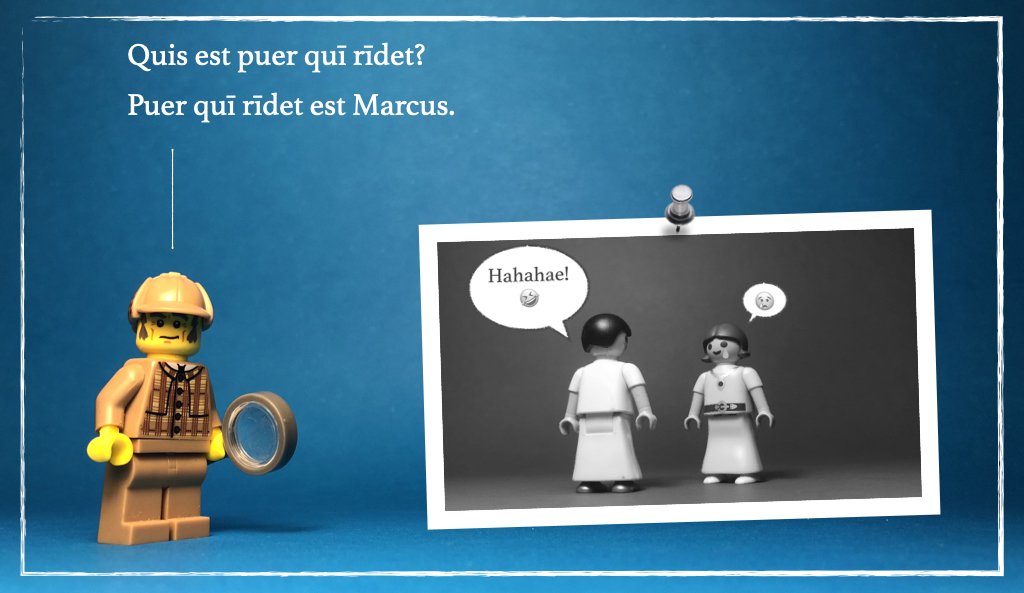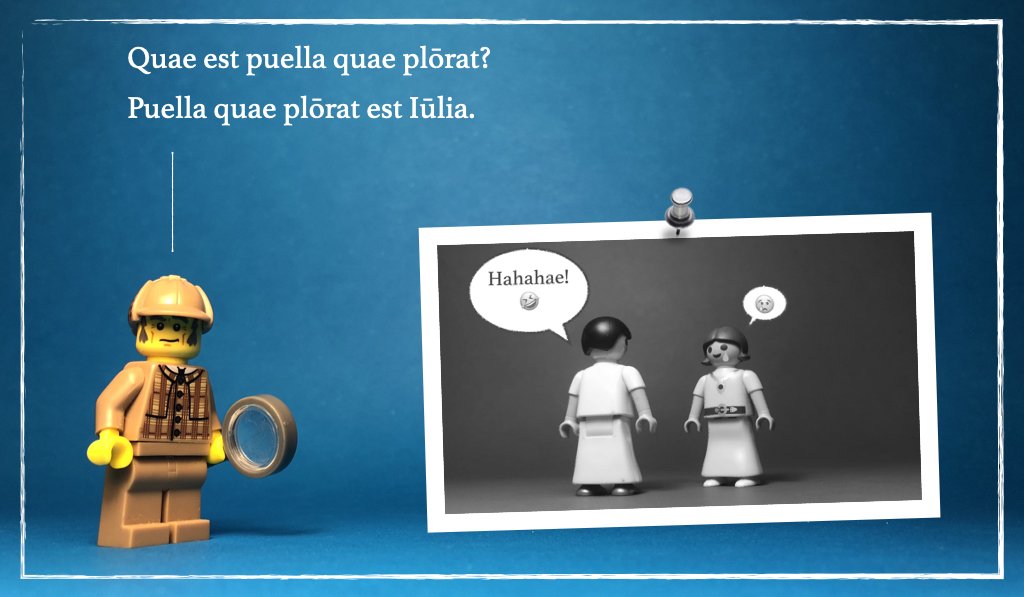Salvēte, sodālēs.
First, a four sample sentences from Capitulum Tertium:
Quis est puer qui rīdet? Puer quī rīdet est Mārcus. Who is the boy who laughs? The boy who laughs is Marcus.
Quae est puella quae plōrat? Puella quae plōrat est Iūlia. Who is the girl who cries? The girl who cries is Julia.
The underlined words in the sentences above are called relative pronouns, and are translated as who. Instead of trying to explain relative pronouns, I’ll just provide a few more examples and hopefully that will make it clear. I will say, however, that quī is used if the who refers to a male (or any masculine noun) and that quae is used if the who refers to a female (or any feminine noun).
Quis est vir quī dormit. Vir quī dormit est Iūlius . Who is the man who is sleeping? The man who is sleeping is Julius.
Quae est fēmina quae venit? Fēmina quae venit est Aemilia. Who is the woman who is arriving? The woman who is arriving is Aemilia.
Quis est puer quī Iūliam pulsat? Puer quī Iūliam pulsat est Mārcus. Who is the boy who is hitting Julia? The boy who is hitting Julia is Marcus.
Quae est puella quae Aemiliam vocat? Puella quae Aemiliam vocat est Iūlia. Who is the girl who is calling Aemilia? The girl who is calling Aemilia is Julia.
Now READ lines 69-71 (a very short section indeed). If you want to read ahead and complete the chapter, go ahead. But I’ll still be back next lesson to explain quem and quam for those who need it.
Satis est. See you soon.


